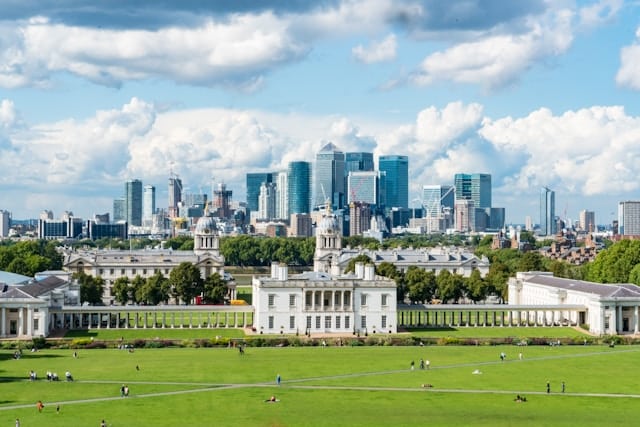As the world becomes increasingly digitalized, new technologies are being developed and implemented to enhance various facets of our lives. One such technology that stands at the forefront is Digital Twins. Digital Twins technology is an innovative concept that holds immense potential for urban planning and management. But, how can this technology be utilized for urban planning in the UK? In this article, we’re going to explore the various ways Digital Twins can be used to revolutionize urban planning in the United Kingdom.
The Concept of Digital Twins
What exactly are digital twins? Simply put, a digital twin is a virtual model of a city or any other physical system. This digital counterpart uses real-time data to mirror the physical entity, allowing for better analysis and understanding of the system.
En parallèle : What’s the Role of Machine Learning in Optimizing UK’s Public Sector Services?
Digital twins are revolutionising various sectors, from manufacturing to healthcare. However, their application in the urban planning landscape is still relatively untapped. As cities evolve and become more complex, harnessing the power of digital twins could help in better understanding and managing these urban landscapes.
Digital twins can provide an accurate, up-to-date, and interactive representation of an urban area, integrating various types of data such as GIS data, transport data, energy usage data, and climate data. This comprehensive data integration can yield valuable insights for more informed decision-making within the urban planning process.
A lire en complément : What Are the Current Trends in Biofuel Production from Waste Materials in the UK?
Urban Planning and Digital Twins
Urban planning involves the design and regulation of the use of space within urban areas. It encompasses various aspects, including transport management, energy management, and climate adaptation. Digital twins can significantly streamline and enhance these processes, taking urban planning to new heights.
Digital twin technology can provide a detailed and dynamic picture of a city, its resources, its inhabitants, and its infrastructure. This can assist urban planners in identifying trends, predicting future scenarios, and making more informed decisions. It allows them to experiment with different planning strategies in a risk-free environment, leading to more effective and sustainable urban development.
For example, by using a digital twin of a city, planners can simulate the impact of a new transport network on traffic flow and congestion. They can also model the effect of energy-efficient buildings on the city’s overall energy consumption. Such data-driven planning can significantly contribute to the creation of smart cities.
Digital Twins and GIS
Geographic Information System (GIS) data is crucial in urban planning. This data provides valuable spatial information that helps planners understand the physical characteristics of an urban area and its surrounding environment. Digital twins can seamlessly integrate and visualize this data, making it more accessible and understandable.
By creating a 3D digital twin of a city, urban planners can have a comprehensive view of the city and its various elements. They can overlay GIS data onto this model to get a better understanding of the city’s topography, land use, and infrastructure. This can assist in planning strategies such as zoning, disaster management, and infrastructure development.
Moreover, real-time GIS data can be incorporated into the digital twin, making it a dynamic and up-to-date representation of the city. This ability to constantly update the model with new data ensures that planners have the most accurate information at their disposal at any given time.
Digital Twins and Smart Cities
The concept of smart cities revolves around the use of data and technology to improve the efficiency and quality of urban services. Digital twins can play a pivotal role in realising this concept. A digital twin of a city is essentially a "smart city" in itself – a city where data is used to optimise operations and improve the quality of services.
Digital twins can provide a platform for integrating and analysing data from various sources. This data integration can facilitate the implementation of smart solutions in areas such as transport, energy, and waste management. For instance, a digital twin can simulate the impact of installing smart grids in a city, providing valuable insights into energy consumption patterns and potential savings.
By providing a real-time, data-driven, and interactive representation of a city, digital twins can help urban planners, policymakers, and citizens alike in understanding and managing urban areas more effectively. This can lead to smarter, more sustainable cities that better cater to the needs of their inhabitants.
The Future of Urban Planning with Digital Twins
The future of urban planning lies in the effective use of digital twins. As technology advances, digital twins are set to become more sophisticated, integrating more types of data and providing more in-depth insights. The capabilities of this technology will continue to expand, with the potential to revolutionise urban planning in ways we can only imagine.
The use of digital twins in urban planning is still in its early stages, but the potential is immense. As more cities adopt this technology, the benefits will become more apparent. Digital twins can lead to more informed decisions, more effective strategies, and more sustainable urban development. They can help create cities that are better equipped to face the challenges of the future.
As we look towards the future, it’s clear that digital twins will play a crucial role in the evolution of urban planning. Their ability to integrate and analyse vast amounts of data in real-time will provide invaluable insights into the workings of our cities. This, in turn, will lead to more effective and sustainable urban development, making our cities smarter and more livable.
Digital Twins as Catalysts for Climate Action
As urban areas continue to grapple with the effects of climate change, the need for proactive and effective climate action has become more urgent than ever. Digital twins could serve as powerful tools in this regard, augmenting the ability of urban planners to envision, implement, and assess climate action strategies.
Digital twins provide a high-tech, data-driven platform for exploring the potential outcomes of various climate adaptation and mitigation strategies. By simulating different scenarios, these virtual city models can help to project the impacts of climate change, as well as the efficacy of proposed responses. For instance, a digital twin can model the potential effects of rising sea levels on a coastal city, or the impact of increased heatwaves on an urban community.
Moreover, digital twins allow for real-time monitoring of an urban area’s environmental attributes, such as air quality, temperature, and precipitation patterns. This feature can help urban planners monitor climate trends and adapt strategies based on the dynamically updated data.
With the aid of machine learning and artificial intelligence, digital twins can generate predictions and provide recommendations for climate action. They can demonstrate how implementing green roofs or increasing tree cover might improve air quality, or how urban design adaptations could reduce the urban heat island effect.
Overall, digital twins can revolutionise the field of environmental planning and contribute significantly to climate action in urban areas. They offer a glimpse into the future of our cities – a future that is smart, sustainable, and climate-resilient.
Conclusion – Digital Twins: Paving the Way for 21st Century Urban Planning
In conclusion, the advent of digital twin technology presents a groundbreaking opportunity for urban planning in the UK. The ability to create and manipulate a real-time, data-rich simulacrum of a city gives unprecedented power to urban planners and policymakers in their effort to create sustainable and smart cities.
Digital twins will help in the effective utilization of data from various sources, enabling more informed decision-making, and providing a platform for testing and refining urban development strategies. Whether it’s transport management, energy usage, climate action, or infrastructure development, the application of digital twins promises to bring about a new era of urban planning.
While the use of digital twins in urban planning is still nascent, the possibilities they offer are vast. As technology progresses and digital twins become more sophisticated, we can expect to see their use becoming a standard in city planning and urban development. The potential for a more sustainable, livable, and resilient urban future is in our hands, and digital twins are set to guide the way.
In this rapidly changing world marked by the relentless march of technology and the urgent need for climate change mitigation, digital twins stand poised to play a crucial role. The world is our oyster, and with the help of digital twins, we can envisage and mould the future of urban living, one twin city at a time. The revolution in urban planning is here, and it is digital.






